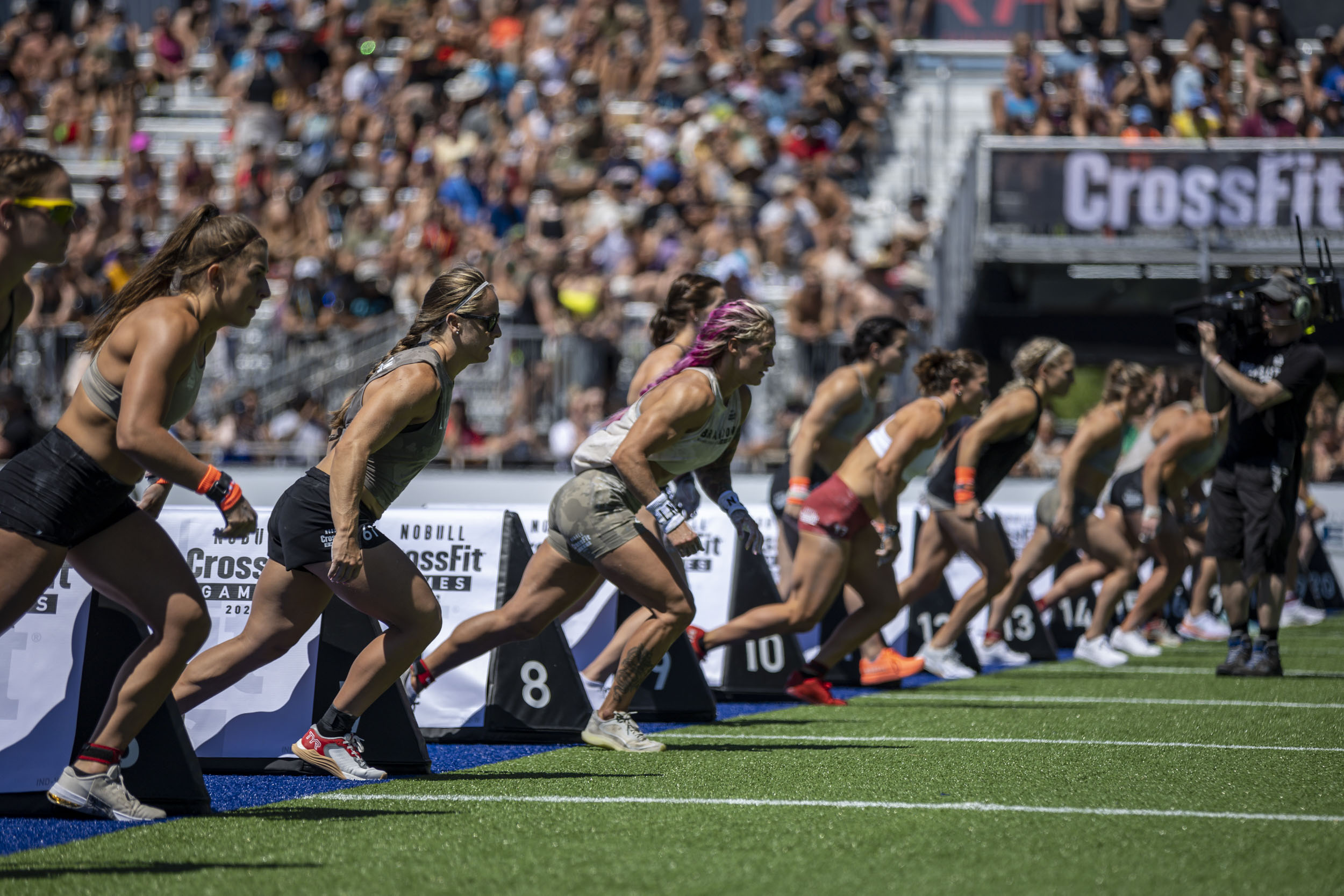The History and Evolution of the CrossFit Games Death

The CrossFit Games Death, a grueling event that tests athletes’ physical and mental fortitude, has become a staple of the CrossFit Games, evolving over time into a test of strength, endurance, and resilience. Its history is intertwined with the development of the CrossFit Games themselves, reflecting the changing landscape of the sport.
The Origins and Early Iterations, Crossfit games death
The CrossFit Games Death, in its earliest form, emerged in 2007, the first year of the CrossFit Games. It was initially a single, long workout, known as “Death by 1000 Cuts,” that challenged athletes to complete a series of movements for a specific time, increasing the repetitions with each round. The first Death by 1000 Cuts was a 12-minute AMRAP (As Many Rounds As Possible) of 1000m row, 30 squats, and 30 pull-ups, with the number of repetitions increasing by one each round. The workout was designed to push athletes to their limits, testing their ability to maintain intensity and consistency over a sustained period.
The Evolution of Difficulty and Format
Over the years, the CrossFit Games Death has undergone significant changes, becoming more challenging and complex. The format of the event has shifted from a single, long workout to a series of shorter, more intense workouts, often with a time cap. The movements included in the Death have also evolved, incorporating more advanced and challenging movements, such as handstand push-ups, muscle-ups, and heavy barbell lifts.
The Impact on the CrossFit Community
The CrossFit Games Death has had a profound impact on the CrossFit community. It has become a benchmark for fitness and a source of inspiration for athletes of all levels. The event has pushed athletes to train harder and strive for greater fitness, leading to significant advancements in strength, endurance, and overall athleticism. The Death has also become a symbol of the CrossFit Games, representing the event’s commitment to pushing athletes beyond their perceived limits.
The Physical and Mental Demands of the CrossFit Games Death

The CrossFit Games Death, a grueling test of physical and mental fortitude, pushes athletes to their absolute limits. This event demands a unique blend of strength, endurance, and resilience, making it a true testament to the athlete’s overall fitness.
Physical Demands
The CrossFit Games Death is a demanding event that requires athletes to perform a variety of movements with high repetitions and significant weight. The movements involved are typically compound exercises that engage multiple muscle groups, making them particularly challenging.
- High-Intensity Workouts: The Death is characterized by its high-intensity workouts, which involve short rest periods between sets and rounds. This requires athletes to maintain a high level of intensity throughout the event, which can be physically and mentally draining.
- Heavy Lifting: The Death often includes heavy lifting, requiring athletes to move significant weights. This can put a strain on the musculoskeletal system, requiring a high level of strength and power.
- Cardiovascular Endurance: The high-intensity nature of the event demands a high level of cardiovascular endurance. Athletes must be able to maintain a high heart rate for extended periods, requiring a strong aerobic base.
- Metabolic Conditioning: The Death often involves metabolic conditioning exercises, such as burpees and box jumps. These movements challenge the athlete’s metabolic system, requiring them to maintain a high level of energy expenditure.
Mental Demands
The CrossFit Games Death presents a unique set of mental challenges, pushing athletes to their psychological limits.
- Fatigue: The high-intensity nature of the Death can lead to extreme fatigue. Athletes must be able to overcome fatigue and maintain their focus and motivation throughout the event.
- Pressure: The Death is a high-pressure event, with athletes competing for a coveted title. This pressure can impact an athlete’s performance, requiring them to manage their stress and anxiety effectively.
- Strategic Decision-Making: Athletes must make strategic decisions during the Death, such as pacing themselves and choosing the most efficient movements. This requires them to think critically and adapt to the changing demands of the event.
- Pain Management: The Death can be physically painful, requiring athletes to manage their discomfort and pain. This requires a high level of mental toughness and resilience.
Comparison to Other CrossFit Workouts
The CrossFit Games Death is widely considered one of the most challenging CrossFit workouts. Compared to other challenging workouts, the Death stands out due to its unique combination of high-intensity, heavy lifting, and mental demands. For instance, while a workout like “Fran” emphasizes strength and power, the Death requires a broader range of physical and mental capabilities.
Notable CrossFit Games Death Performances

The CrossFit Games Death is a grueling event that demands immense physical and mental fortitude. Over the years, athletes have delivered legendary performances that have etched their names in CrossFit history. These performances are not only remarkable for their athletic prowess but also for the strategies, techniques, and stories that surround them.
Performances That Defined the Death
The Death has witnessed some of the most iconic performances in CrossFit history. These performances have been defined by athletes’ resilience, determination, and innovative strategies.
- Rich Froning (2013): Froning, the four-time CrossFit Games champion, delivered a dominant performance in the 2013 Death. He completed all three rounds in a record-breaking time, showcasing his exceptional strength and endurance. Froning’s strategy involved prioritizing the heavy lifts and pacing himself through the cardio sections. His performance solidified his reputation as one of the greatest CrossFit athletes of all time.
- Mat Fraser (2017): Fraser, a five-time CrossFit Games champion, faced a challenging Death event in 2017. The event included a new element: the “Death Wheel.” Fraser’s strategy focused on maintaining a consistent pace throughout the event, avoiding burnout. His ability to handle the Death Wheel effectively contributed to his victory.
- Tia-Clair Toomey (2018): Toomey, a five-time CrossFit Games champion, is known for her dominance in the Death event. In 2018, she faced a grueling version of the Death, which included a challenging rowing segment. Toomey’s strategy involved maximizing her efficiency on the rowing machine, allowing her to stay ahead of her competitors. Her performance showcased her incredible endurance and work ethic.
Crossfit games death – The CrossFit Games, while a testament to human strength and endurance, have unfortunately seen their share of tragedies. The recent death of a competitor, what happened to lazar dukic , has brought the issue of athlete safety to the forefront.
While the sport’s intensity is undeniable, it’s crucial to strike a balance between pushing boundaries and ensuring the well-being of all participants. The CrossFit community is grappling with this tragedy, and it’s a reminder that safety should always be paramount.
The CrossFit Games, while a test of incredible athleticism, has unfortunately seen a few tragic deaths. While these incidents are rare, they raise concerns about safety protocols and the potential risks involved. One particularly perplexing case that shook the community was the disappearance of Lazar Dukic, a competitor who vanished during the 2015 Games.
You can learn more about what happened to him by reading what happened to Lazar Dukic. These incidents highlight the importance of safety measures and proper medical attention, even in the most extreme athletic competitions.